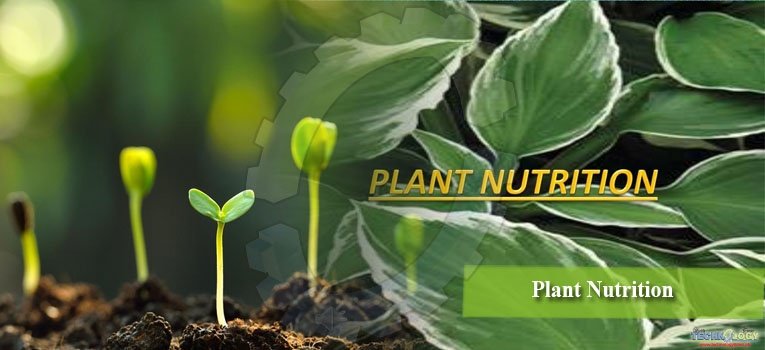A plant nutrient is a chemical element that is vital for plant growth and reproduction. The principal criterion is that the element must be required for a plant to complete its life cycle. The second criterion is that no other element substitutes fully for the element being considered as a nutrition. The third criterion is that all plants require the element.

Types of plant nutrients
The three categories of plant nutrients on the bases of requirement.
Primary nutrients
The primary plant nutrients are nitrogen (N), phosphorus (P), and potassium (K). These essential elements are required by plants in large amount than elements that fall into the other two categories. Additionally, each of these three elements perform critical functions in plant biology.
Nitrogen is necessary for building proteins, produces carbohydrates, and is essential for plant cell growth. Phosphorus effects root growth, seed formation, and plant ripping. The potassium play role in disease resistance, effects plant enzymes and fruit formation.
Secondary nutrients
Secondary plant nutrients are magnesium (Mg), calcium (Ca), and sulphur (S). These elements, although not needed in large quantities, are necessary for plant to complete its life cycle. Magnesium is a central component in chlorophyll production and helps plants to operate phosphorus and iron.
Calcium plays many roles in regulating plant system functions like respiration and cell division. However, in some plant’s calcium plays an exceedingly important role. For example, it is essential for nut development in peanuts. Sulphur helps to produce vitamins, aids in seed production, and is an integral part of forming amino acids.
Micronutrients
Micro nutrients are needed in much smaller quantities than other plant nutrients, but partially necessary for growth and development. The plant micronutrients are iron (Fe), manganese (Mn), molybdenum (Mo), boron (B), chlorine (Cl), copper (Cu), and zinc (Zn). All these micronutrients aid in many different roles in plant biology. Many of them, like copper, play a major role in reproduction and photosynthesis. Chlorine (CI) is involved in photosynthesis.
Nutrients deficiency
- The soil pH of 6-7.5. seems to be ideal for the accessibility of nutrients to plant. Alkaline and acid soils are more prone to nutrient deficiency in the plant.
- The presence of other ions in large amount also influences the availability of nutrients to the plant, e.g on calcareous soils iron deficiency is due not to a lack of iron but to its being immobilized or inactivated by carbonates or bicarbonates.
Principles of Nutrient Management
- Application of right quantity of nutrients.
- Choice of right sources of fertilizers to supply the required nutrients.
- Application at right time by adopting proper methods.
Conclusion
Plants require 16 essential nutrients to grow and survive, classified by their importance into primary nutrients (N, P, K) secondary nutrients (Ca, Mg, S) and micronutrients (B, Cu, Fe, Mn, Zn, Mo, Cl, Co, Ni). Nutrients may be mobile or immobile in the plant and in the soil, which influences redistribution of nutrients and display of deficiency symptoms, and the fertilization of crops. Nutrient demands change throughout the life of the plant, in general increasing during vegetative growth but decreasing during reproductive development.
Talha Javed and Ahmed Mukhtar
University of Agriculture, Faisalabad, Pakistan